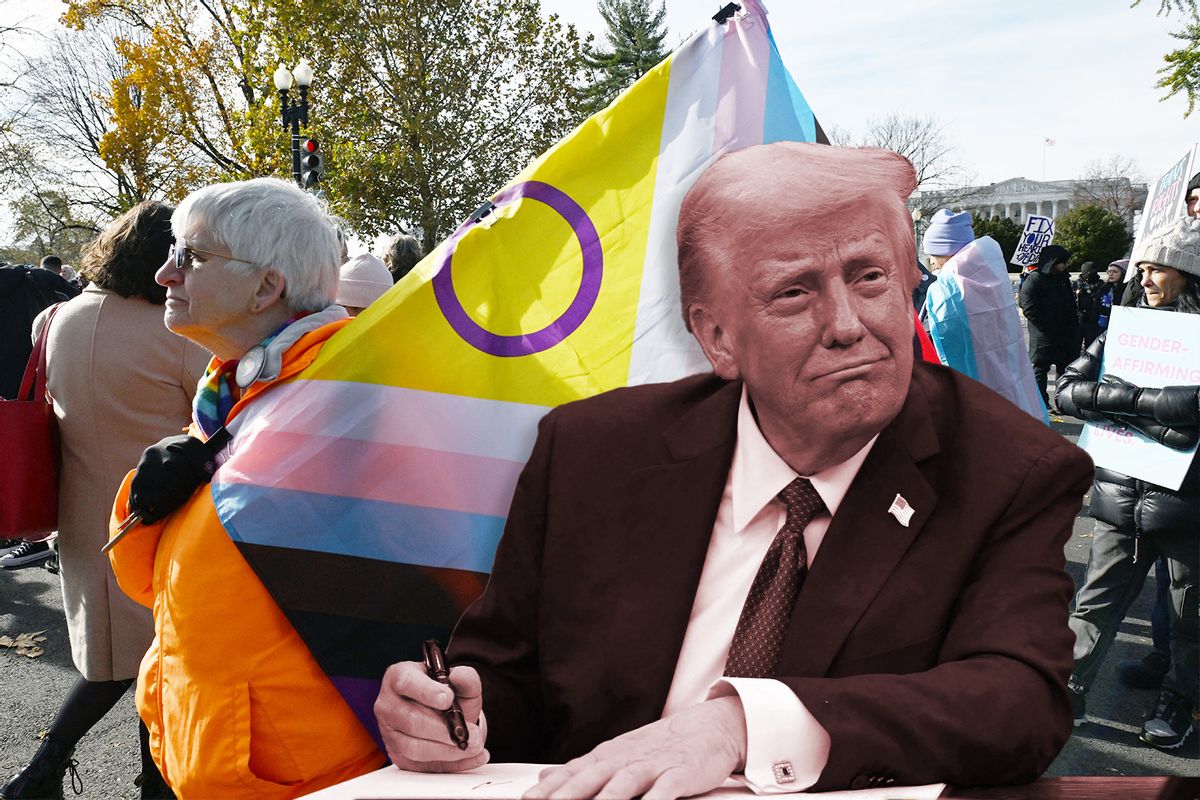On Monday, President Donald Trump signed an executive order claiming that the U.S. government will only recognize two sexes, male and female. The directive claimed that ideologues across the country are denying “the biological reality of sex” which has allowed men who identify as women to “gain access to intimate single-sex spaces and activities designed for women.”
In other words, the executive order was positioned as a move to “defend women” from “gender ideology extremism.” Amid the chaos, many reproductive rights advocates were quick to point out the proposed definitions of “male” and “female” in the order and the use of the word “conception.”
“‘Female’ means a person belonging, at conception, to the sex that produces the large reproductive cell,” the executive order stated. “‘Male’ means a person belonging, at conception, to the sex that produces the small reproductive cell.”
By referring to the moment of conception, some on social said this could be the start of a move to codify fetal personhood in federal law. Notably, it’s scientifically inaccurate to say sex can be determined at conception, to say nothing of the limitations of defining a person solely by gamete size. Chromosomal sex is determined at the moment of fertilization — a term often conflated with conception — the specific moment when a sperm and egg join together. But early embryos of both sexes begin with the same basic structures, that can later develop into either male or female organs. By default, the majority of embryos are female for the first five to six weeks, unless specific factors actively trigger male development.
However, if federal lawmakers gave fetuses or embryos, the legal rights of a person, that would lead to a national abortion ban, in addition to other wide-range consequences. As legal experts previously told Salon, the Republican Party released its 16-page “Make America Great Again” policy platform ahead of the national convention last year stating that it supported states establishing fetal personhood through the constitution’s 14th Amendment; language, they said, that was “hidden in plain sight.” Could something come out of this executive order that could result in fetal personhood, or was it merely a signal of what to to expect?
"One cannot separate rights for trans people from a broader set of reproductive rights and justice."
“It’s the least of my concerns,” David S. Cohen, a professor of law at Drexel Kline's School of Law, told Salon. “The Supreme Court and any other institutions are not going to find fetal personhood because of this one clause in this executive order. If there's going to be fetal personhood found as a national requirement, it's going to have nothing to do with this executive order.”
In the wake of the presidential election news, the Guttmacher Institute outlined 10 ways the Trump presidency could restrict access to reproductive rights. When it comes to blocking abortion access, it likely wouldn’t happen through an explicit nationwide abortion ban. Instead, the Trump-Vance administration could leverage the Comstock Act, an 1873 anti-vice law that bans obscene articles being used for abortion from being mailed. As explained by KFF, a literal interpretation of this could mean that material to produce all abortions would be prohibited from being mailed. This could affect other medical care, like miscarriage management, and stop medication abortion from being mailed as well.
However, Seema Mohapatra, a law professor at the SMU Dedman School of Law, told Salon when she first read the executive order, what stood out to her the most was the use of the word conception.
Want more health and science stories in your inbox? Subscribe to Salon's weekly newsletter Lab Notes.
“Sex is not determined at conception until weeks into the process when the sexual cells differentiate and this is a much later stage of development so this is just scientifically wrong,” she said. “Then I think about why they put that language in, and that seems to be a part of a broader effort to insert fetal personhood into official records even when it's unrelated to abortion.”
Mohapatra said they have seen this in court opinions previously.
“We've seen this attempted in different states in statutes and now we're seeing it in executive orders,” Mohapatra added. “One cannot separate rights for trans people from a broader set of reproductive rights and justice.”
This kind of language “flies under the radar,” she said, but is something to pay attention to now and in the future.
We need your help to stay independent
“People may not realize that this anti-trans executive order also implicates fetal personhood,” she said. “And I think we're gonna see this more and more in completely unrelated areas.”
Cohen told Salon it’s “absolutely concerning” that this executive order was one of the first things Trump signed.
“He is going after vulnerable people and trying to say they're not who they are, threatening their documents that are necessary for travel, that are necessary for healthcare,” Cohen said. “It’s certainly very upsetting that this is one of the first things he did.”
Cohen added it’s notable that none of the executive orders were directly related to abortion — but that could change any minute.
“The story is yet to be written, as soon as we hang up the phone, there could be an executive order related to abortion,” he said. “We just don’t know.”



Shares